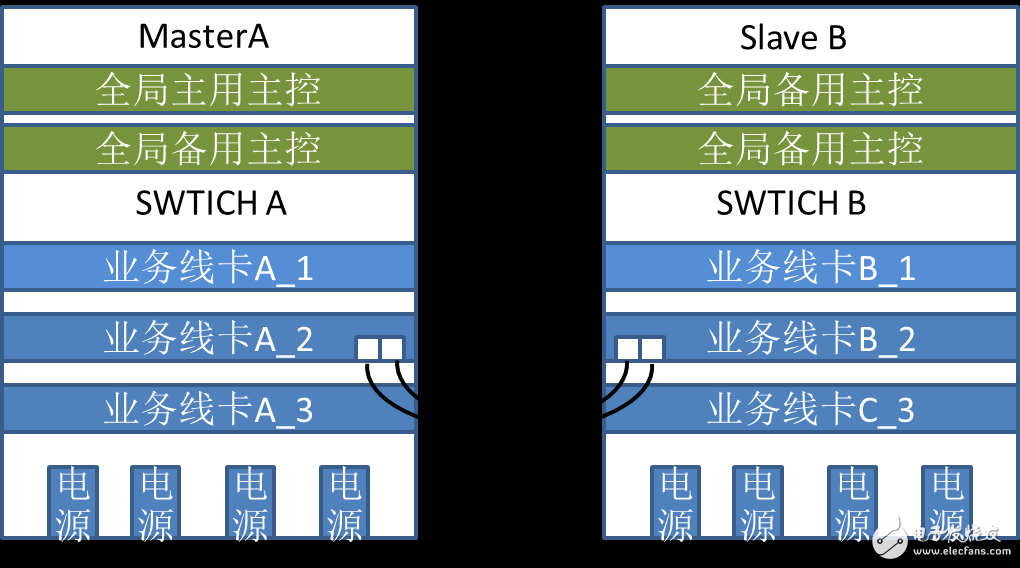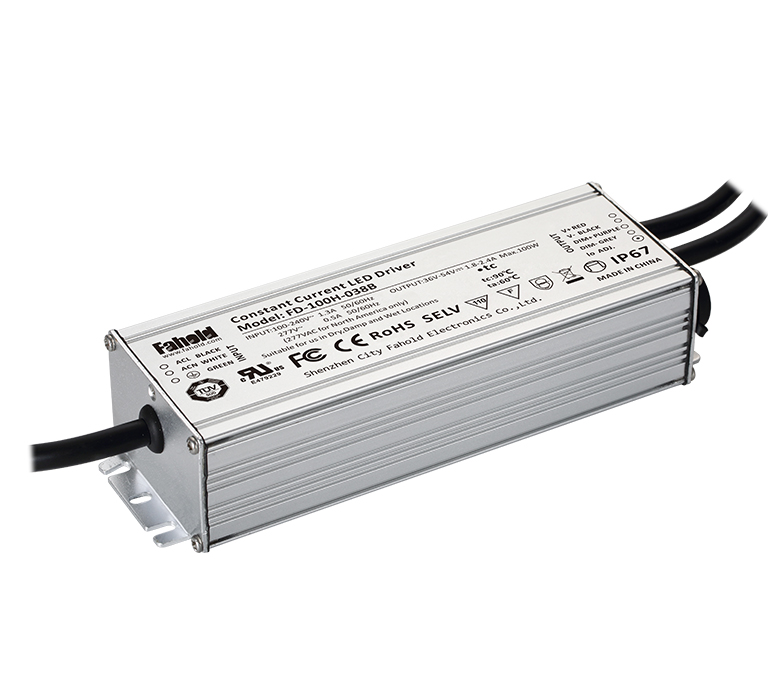In the past two years, with the rise of cloud computing, big data, computing virtualization and other technologies, along with everyone's yearning for the "cloud", it has accelerated the maturity and application of network virtualization technology. It can be said that the current IT infrastructure network has no "cloud", switch virtualization technology has become the technology of choice for new network architecture.
So what is the deployment principle of switch virtualization? How to deploy in the real network structure? What enhancements and innovations did virtualization 2.0 do? Today we will unveil the mystery of switch virtualization technology and fully understand the technology;
Now let's look at the deployment mode of the high-end switch virtualization technology that is common in the industry, as shown in Figure 1.

(figure 1)
Referring to the two device deployment modes, the two devices are member "master" and member "slave" devices. The virtualized interconnection is mainly realized by directly connecting the physical ports of the high-speed line cards through link bundling. Figure 1.
Interconnected links are called VSL (Virtual Switching Link) links. Considering the price/performance ratio, there are two main deployment methods:
Mode 1: Directly through the high-speed optical fiber interconnection, the rate is high, the member deployment distance is not limited, and it is widely used in scenarios such as multi-core nodes and disaster recovery interconnections;
Mode 2: Connected through a dedicated connection cable, the cost is low, and the member distance is limited. It is suitable for deployment in the same equipment room and the same cabinet.
After the device virtualization architecture is deployed, from the management point of view, two or more devices are “integrated†into one device. They share a routing table and a forwarding table. It is equivalent to having one deployment and multiple masters. The "super" switch of the service line card, all the functions are deployed in the same way as a single device configuration.
The above network structure deployment model, we call it VST 1.0 (Virtual Switching Technologies). At present, it is widely deployed in the building LAN, campus network and data center, and the application is mature. At the same time, as the market deployment increases, the application coverage increases, and the maintenance experience accumulates, we also find that the above deployment mode has further technical optimization and improvement. "innovation" potential;
For example, the virtualized connection between devices is realized by the VSL interconnection in the middle of the device, which inevitably appears:
â– The link bandwidth is insufficient, which easily forms a bandwidth forwarding bottleneck.
â– Normal data forwarding packets and virtualized management packets are transmitted on the same physical channel. Data packets are prone to occupy bandwidth resources, causing hidden dangers in the architecture.
In order to solve the above two problems, the solution that has been adopted is to superimpose a complex QoS guarantee mechanism on the VSL link while maximizing the VSL physical link, and to preferentially ensure management message processing.
1. QoS function deployment introduces complex software function design, resulting in bloated functional modules and increased structural complexity;
2. Qos itself has not fundamentally solved the resource conflict problem.
In order to fundamentally solve the resource conflict problem caused by the traditional virtualization deployment architecture, Maipu has upgraded and optimized the original high-end virtualization technology VST1.0 to form the current VST2.0 technology.
With global manufacturing standards and various certifications including CE, UL,FCC, TUV and SAA, our Led Driver products are sold in domestic market and are exported to various international markets including US, UK, France, Germany, Australia, Africa, Korea etc. We offer a wide range of LED lighting power solutions which includes Led Street Lighting or System, LED Lams, LED linear etc. At the same time Saving energy and Maximize beauty of your workplaace drive by our designing Switching Power Supply!
Most Application: LED street light,outdoor for waterproof,
Advantage: High Power Led Driver,safety and stability, high pressure test protection, short circuit protection, anti-lightning strong, safe level Certification, UL TUV FCC, etc. certification.
Parameter:
Input ovltage:100-277V
Output voltage(different range):24-38V/30-42V/36-54V/45-76V/72-143V
Current:100-5000mA
Power factor:>0.95
THD:<15%
Dimming: 0-10V/PWM/RX
Housing: Aluminum

What's the benefits of Fahold Linear Lights driver?
- Standard Linear Lighting
- Cost-effective light-line solution for industry,commercial and other applications
- Good quality of light with 5years warranty, EMC, EMI, safety SELV design
- Easy to order and install,requiring less time,reducing packaging waste and complexity
- Flexible solution
Question 1:Are you a factory or a trading company?
Answer: We are a factory.
Question 2: Payment term?
Answer: 30% TT deposit + 70% TT before shipment,50% TT deposit + 50% LC balance, Flexible payment
can be negotiated.
Question 3: What's the main business of Fahold?
Answer: Fahold focused on LED controllers and dimmers from 2010. We have 28 engineers who dedicated themselves to researching and developing LED controlling and dimming system.
Question 4: What Fahold will do if we have problems after receiving your products?
Answer: Our products have been strictly inspected before shipping. Once you receive the products you are not satisfied, please feel free to contact us in time, we will do our best to solve any of your problems with our good after-sale service.
Led Dimmable Driver,Triac Dimming Driver,Protection Device For Led Driver
ShenZhen Fahold Electronic Limited , https://www.fahold.com
